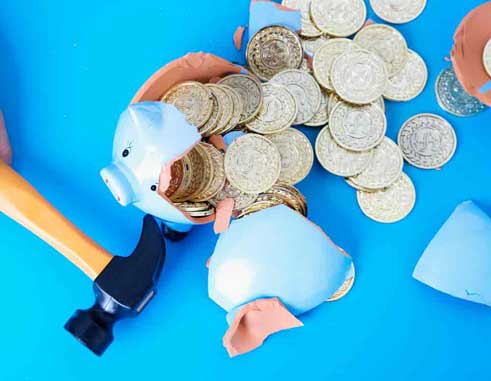By Samuel Rosenberg
ARE your finances ready for the unexpected? While you can prepare for your expected bills like water, electricity, cell phone and gas every month, if your car breaks down or your washing machine needs a repair, how can you fund the diagnosis and repair and still have enough money to live on? What if you lose your job and can’t pay your bills until you find new employment?
This is when your friends will recommend that you set aside an emergency fund. That is money you will keep separate from your usual income and expenses bank account. It is the fund of money you will turn to in an emergency to help you past your potential cash flow problems, without affecting your regular financial planning.
The emergency funds save you from turning to expensive credit cards or asking your bank for a loan to allow you to get your car, or other problems that you didn’t ever dream about, working again. By taking a loan to deal with your short term problem, the cost to repay the debt would add to your monthly expenses and must be budgetted for.
When you suddenly receive a medical bill that you were not expecting before you became ill, you may worry about how you are going to fund the expense of getting you fit and healthy and back to work. Should you not be able to afford medical or health insurance, your emergency fund will find good use immediately.
An ideal emergency fund helps you keep between three and six months of your monthly expenses set aside, but you might start with trying to target $1,000 over time. This money can then be used to clear any emergency requirements for your money or for you to pay your expenses for a short while, without getting into further debt.
The key to planning an emergency fund is to have your bank automatically transfer dollars from your bank account to a savings account the day after your salary arrives. You may only be able to transfer small amounts each month, but eventually you will reach your target. The excess money in your savings account can then be treated as your savings, with all of it earning interest to boost your savings and emergency fund.
Should you use some of your emergency fund, you can begin to top it up from the following month until it returns to safe levels.
By planning your income and outgoings, you will quickly know exactly how much you can set aside for emergencies before you allocate money for social activities and other matters that might affect you, like large medical bills.
When you plan the emergency fund as part of your overall financial planning, you are setting out to succeed whatever life throws at you. What might begin as $10 per month may grow to $50 per month in months or years ahead. When you have spare money left over at the end of the month, you can give your emergency fund a boost and take away any of the worries and of difficulties when disaster strikes, but you will be in control.
Samuel Rosenberg is the founder and CEO of Axcel Finance Ltd., the leading regional microfinance institution. Share your thoughts and email your questions to [email protected]













